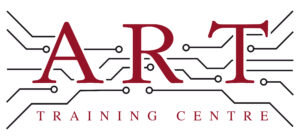Definition
FR-4 is a widely used composite material in electronics manufacturing, specifically as a substrate for printed circuit boards (PCBs). It consists of woven glass fabric and epoxy resin, providing excellent electrical insulation, mechanical strength, and thermal stability. FR-4 plays a crucial role in ensuring the reliability and performance of electronic devices, making it a fundamental component in the industry.
How It’s Used in the Industry
FR-4 is primarily used in the fabrication of printed circuit boards (PCBs). The process begins with the layering of FR-4 sheets, which are then coated with copper to form conductive pathways. During soldering, components are attached to the PCB, often using surface mount or through-hole techniques. For rework, technicians may need to desolder and replace components on FR-4 boards, requiring careful handling to prevent damage. Understanding FR-4 is essential for both trainees and experienced professionals, as it impacts the quality and reliability of electronic assemblies, ensuring they meet industry standards.
History & Origins
FR-4 became common in electronics manufacturing in the 1960s, following the development of epoxy resin technology and glass-reinforced materials. Its adoption was driven by the need for reliable and durable substrates in the burgeoning electronics industry. The establishment of standards, such as those from IPC (Institute for Printed Circuits), helped define the specifications for FR-4, solidifying its role as a standard material for PCBs and contributing to advancements in electronic design and manufacturing processes.
Variations
There are several variations of FR-4, including different thicknesses, glass fabric types, and surface finishes. Some variants are designed for high-frequency applications, while others may offer enhanced thermal properties or flame resistance. Compared to other materials, such as FR-1 or FR-2, FR-4 provides superior mechanical strength and thermal stability, making it more suitable for complex electronic applications. Understanding these differences is essential for selecting the right material for specific projects.
Modern Applications
Today, FR-4 is integral to various applications in electronics production, including both surface mount and through-hole assembly techniques. It is widely used in consumer electronics, automotive systems, and telecommunications equipment. The material’s reliability and compliance with IPC standards make it essential for ensuring the quality of electronic products. Furthermore, FR-4’s versatility allows it to be used in advanced assembly techniques, reinforcing its importance in modern electronics manufacturing and repair.
Practical Tips & Training
When working with FR-4, always prioritise safety by using appropriate personal protective equipment, such as gloves and goggles, to prevent exposure to dust and chemicals. Inspect FR-4 boards for any signs of damage or delamination before assembly. Useful tools include soldering stations with temperature control and magnifying equipment for precision work. Structured training and certification in electronics are vital for mastering the skills needed to work effectively with FR-4, ensuring adherence to industry standards and best practices.


